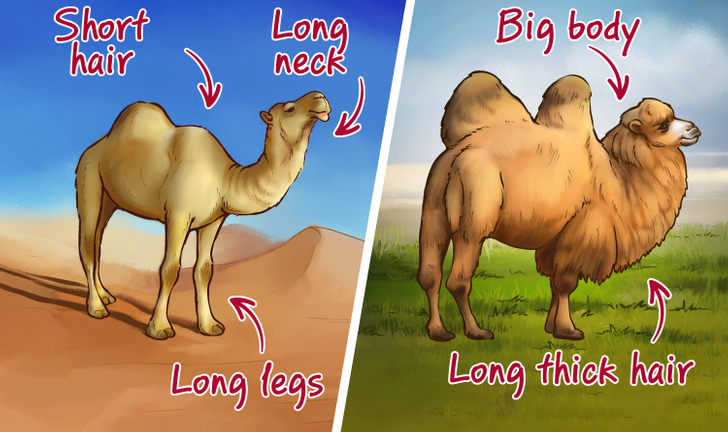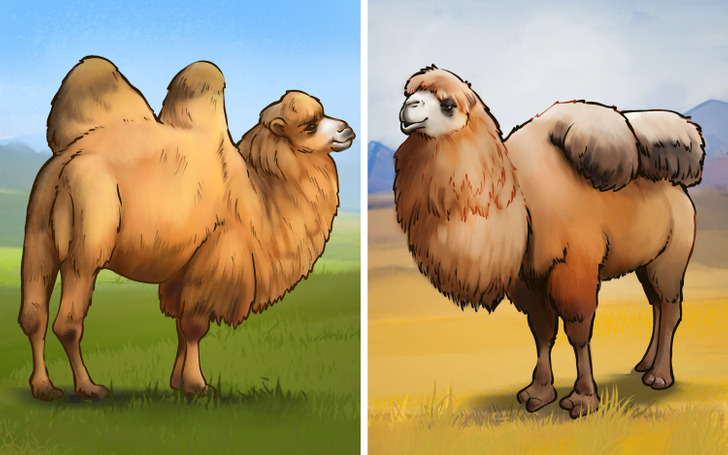Why Some Camels Have 2 Humps and Others, Just One
We know from school that humps help camels survive in the dire conditions of a desert, but it’s still not clear why some camels have 2 humps on their back and others, just one.
5-Minute Crafts would like to tell you about why camels have a different number of humps on their backs and what they need them for.
Why some camels have one hump and others have 2

Single-humped and 2-humped camels are 2 different species. An Arabian camel, the dromedary, has one hump. And the Asian camel, the Bactrian, has 2.
In total, scientists discovered 3 species of camels: the dromedary (1-humped), Bactrian (2-humped), and the wild Bactrian (a wild 2-humped camel). The first 2 species are domesticated. Wild camels inhabiting the desert regions of Mongolia and China are a rare and endangered species.
The dromedary is the tallest of the 3 types of camels. Its height can reach up to 6 feet and 7 inches, and its weight can reach 1,320 pounds. Dromedaries have a narrow chest, a long arched neck, and often, long hair on the neck, hump, and shoulders. The hump of this camel is about 8 inches (or more) tall, and the coat is a shade of brown.
The Bactrian is the largest living camel. Although its shoulder height is less than that of the dromedary (only about 5.2 to 5.9 feet), the overall height is 7.5 to 8.2 feet. The body weight of this animal can reach up to 2,200 pounds. Bactrians have thick hair, which is quite long on the neck and can reach 10 inches in length. The color of the coat varies from dark brown to sandy beige.
Dromedaries and Bactrians live in different parts of the world. The one-humped camel inhabits North Africa and the Middle East, the 2-humped camel lives in Central Asia. By the way, it’s a myth that camels prefer to live only in hot climates. They do well at temperatures ranging from −20°F to 120°F.
Bonus: what’s actually inside the camels’ humps

Contrary to popular belief, camels store fat in their humps, not water. They use it as a source of nourishment when food becomes scarce. If the camel has stayed without water or food for a long time, the humps can droop, but as soon as the animal is able to refuel, they will sit upright again.
The humps also help the animal survive in desert conditions when daytime temperatures can be very high and nighttime temperatures can be low. Due to the accumulation of fatty tissue, the humps help the animal regulate its body temperature. Camels are able to minimize heat insulation throughout the rest of their body during the day when the temperature is high, and at night, the extra heat dissipates through the camel’s body, helping the animal not to get cold when temperatures are low.